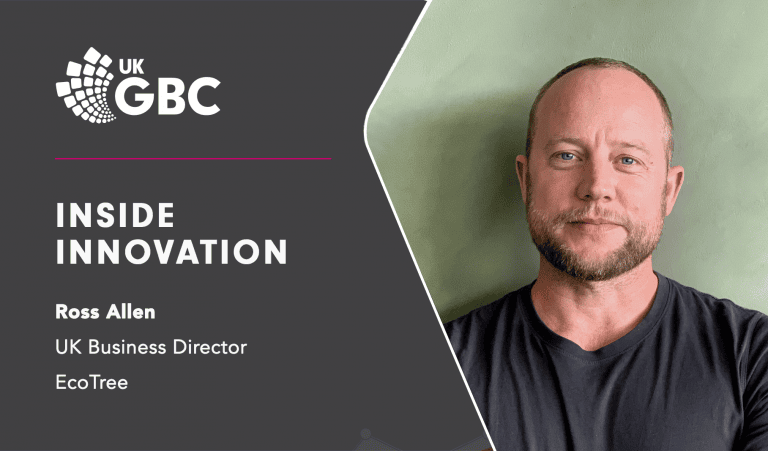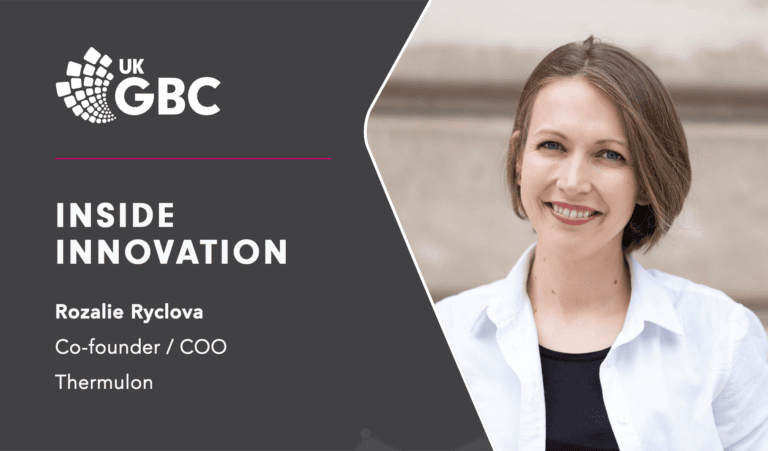Ecotree

What is your elevator pitch?
Ecotree is a sustainable forestry and fintech company. We make it easy for anyone to support sustainable forests across Europe. Our forests promote biodiversity and capture and store carbon. The best bit: these projects grow in financial value over time. With EcoTree, businesses can grow and restore forests while investing in nature-based carbon capture.
Historically forestry ownership is a large-scale investment process. We make it easy through our tech and innovative use of legal frameworks around land ownership – we own the land, but you own the forest.
EcoTree is a fully integrated company. We plant, care for, maintain and manage our forests; calculate and verify carbon capture; and provide digital and communication services on behalf of our clients.
The built environment is clearly one of the most challenged in terms of removing carbon. EcoTree offers a verifiable way to compensate for carbon emitted throughout the building cycle and residual emissions. The innovative financial element of our model is unique – you invest rather than spend and can align sustainability with an investment cycle.
We work with partners that are interested in tackling their emissions while enhancing nature. We are honest about the timelines involved with nature-based carbon capture and very realistic about what it takes to effectively manage forestry projects. When we price projects we include term forest management costs, which is critical for pricing natural carbon sinks.
Our carbon computation methodology has been certified by Bureau Veritas. It gives us the tools to develop precise nature-based carbon projects. Projects outside of France can be verified by other globally standards, such as the Verified Carbon Standard or the Woodland Carbon Code.
Biodiversity is as important as carbon in EcoTree projects. Our forests are of mixed age and species. We focus on native species, ensuring the right balance of hard and softwoods, and supporting natural features such as wetlands. We don’t do monoculture tree farms!!!
How did you get to where you are today?
We’re heavily inspired by the Nordic model of incentivised voluntary recycling. Did you know that in Denmark, with a population of 5 million, 1.4 billion bottles and cans were voluntarily recycled in 2019, with each receptacle returned providing a small financial benefit to the consumer?
EcoTree grew from a seed into a professional company in 2016. It’s taken lots of hard work. We had a concept based on an idea we thought was good and we invested in it. At the beginning it was all self-financed. We have had two rounds of investment since 2016 – seed funding followed by series A.
Over the last 12 months we have partnered with the World Economic Forum through the UpLink/1 Trillion Trees challenge. This has been an accelerator in a sense, through giving us exposure and advice.
Taking the risk and going all in on a start-up is both scary and exciting. We’ve brought together a team with the right set of skills to make EcoTree work, covering forestry, science, carbon, finance, marketing, tech, etc. We have evolved the model in layers by adding these various sophisticated elements.
Our key milestones have been going over 1 million trees last year, the funding rounds and expanding out of France in 2019. Having the science behind EcoTree verified and recognition from the World Economic Forum, Solar Impulse Foundation and the SDG Sustainability Awards have also been big for the company.
What does innovation mean to you?
Innovation doesn’t have to always be something new. It can be taking something that exists and finding a new way to give it value. Innovation comes from perspective and knowledge, hard work… and some good fortune.
How hungry is the built environment for innovation?
The built environment needs solutions for decarbonising and sustainability writ large. There is a huge appetite for innovative ideas that meet the sustainability challenge. Every day there is lots of innovation being applied in the built environment in terms of types of materials for construction, power sources, using smart processes etc, there is a lot going on. I think the Race To Zero is going to really drive innovation over the next couple of years.
What needs to change to help encourage more innovation?
Innovation thrives when there are the right policies, regulations and economic incentives. This is big picture stuff, but to bring that back to our experience, innovation requires an environment that is open to new business models and accepting of out of the box thinking.
What are the biggest challenges you have faced as a start-up?
We have created a model that gives back to people and businesses that want to support nature. We have had to show that this doesn’t make us an investment fund. We have also had to find a way to create ownership rights that do not fit neatly into classic land ownership models. And we are doing this across multiple national jurisdictions. This requires a lot of costly legal and regulatory work.
Creating a tech-based forestry management system has also been challenging. We have also had to figure out how to digitalise forests to enable an e-commerce approach to selling trees / crowdsource finance.
Coming up with something innovative that doesn’t fit into classic boxes makes finding the right people to make it happen really important.
What’s your advice for new innovators and start-ups in the built environment?
Be confident in your convictions. Have courage. Work hard to validate your idea. Focus on minimum viable product, it does not have to be perfect – think about how far the iPhone has come in a short space of time. Secure funding; focusing on this early and understanding where the funding channels might be. Invest in the right people – you need brains and the commitment to take it forward. Also, be prepared for failure.
What’s next for your company?
We want to consolidate a presence in the UK and Scandinavia. That is our big goal for 2021.
And we want to establish some strong partnerships with climate conscious, innovative thinkers in the built environment. We see a parallel between building and forest life cycles. With EcoTree, one can, for example, invest in a forest that compensates for the embodied carbon of a building. But it will eventually start to return money back that can be reinvested into that building. For example, between year 30-50 you are generating returns to keep the building in good shape or add new features.
We are looking at ways to increase the carbon capture potential in forests and other ecological systems, and how we can further digital capabilities to enhance the offer to clients.
Related
Inside Innovation: R8 Technologies

Inside Innovation: Etopia

Inside Innovation: Thermulon

Inside Innovation: Biohm

